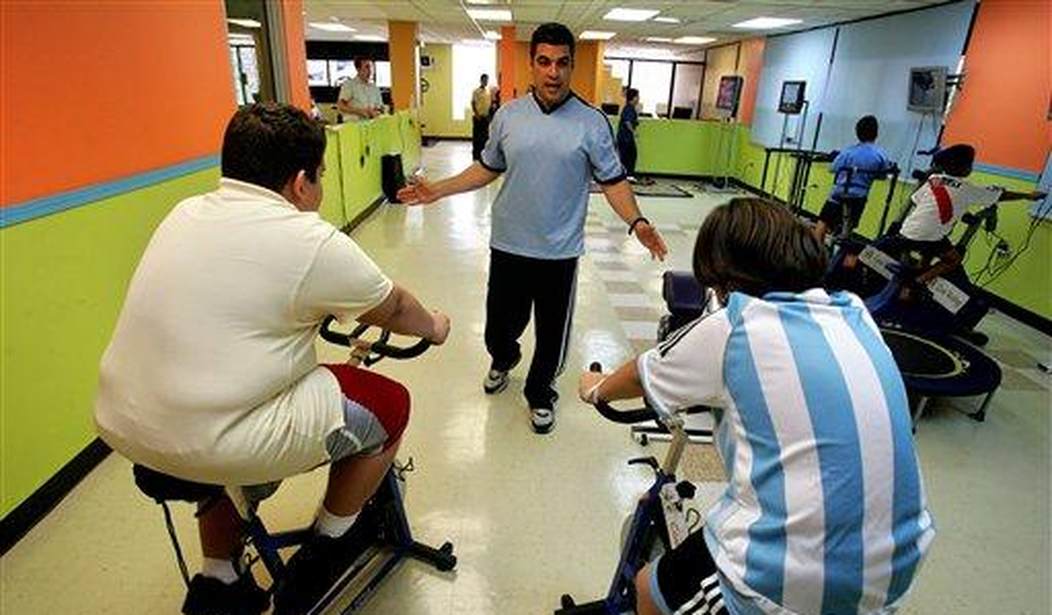You don’t need statistical data to understand that hordes of not just fat but morbidly obese kids lumber among us.
But here it is anyway.
Via the Journal of the American Medical Association:
Severe obesity (body mass ≥120% of the 95th percentile adjusted for age and sex or an index >35 [calculated as weight in kilograms divided by height in meters squared]) is the fastest-growing obesity subcategory in the US pediatric population.
Common sense would dictate that these kids need to get their Chinese Communist Party TikTok account suspended, their phones confiscated, introduced to a treadmill, and force-fed a whole foods-based diet by their parents.
Related: ‘Body Positivity’ Activist Claims ‘Obesity’ Is a Fatphobic Slur
But common sense went out the window years ago in the new Public Health™ technocracy, under which the only viable treatment options presented involve costly drugs and surgeries.
Continuing:
Behavioral lifestyle interventions alone do not result in long-term, clinically important weight loss among youth with severe obesity. Metabolic and bariatric surgery (MBS) is a safe and effective treatment. In 2019, an American Academy of Pediatrics (AAP) policy statement highlighted the need for increased adolescent access to MBS when medically indicated. Recent AAP clinical practice guidelines have supported this policy. We examined trends in MBS use among US youths aged 10 to 19 years and adults before and after the 2019 AAP statement.
The solution, per JAMA? More lucrative surgeries. “Use of and access to MBS have increased among US youth,” the study concludes.
First of all, take a look at the 2024 GOP presidential candidate Chris Christie, who reportedly went under the knife in 2013, to see how effective weight loss surgery is.
To the extent that weight loss surgery is effective at all, it depends entirely on the self-discipline of the patient. My dad’s satanic ex-wife, who was rumored to treat herself to a two-liter of Mountain Dew™ and a pack of Marlboro Light™ cigarettes every day for breakfast, got the surgery, probably continued to eat like a cow anyway (I didn’t monitor her eating habits), then, according to an inside source in the family, busted out her stomach staples, and subsequently gained the weight back. As far as I know, she’s still a heifer to this day.
Second, even the American Society for Metabolic and Bariatric Surgery — the industry interest group that pushes weight loss surgery and brags that the average surgery rakes in $17,000-$26,000 for the surgeon and hospital — acknowledges a 4% major complication rate for patients.
The dirty little secret is that all forms of invasive surgery are inherently risky. That’s why, in a saner time, when the Hippocratic Oath was still abided by, physicians reserved surgical intervention as the last resort should other, safer treatments fail.
Here are some of the more common side effects of the surgery, via the National Institutes of Health:
- “bleeding
- infection
- leaking from the site where the sections of the stomach, small intestine, or both are stapled or sewn together
- diarrhea
- blood clots link in the legs that can move to the lungs or heart”
“Follow-up interventions, surgery, and hospitalizations are relatively common within 5 years of weight-loss surgery, affecting about one-third of patients,” the NIH adds.
This whole farcical mockery of actual healthcare is part of the process of medicalization — defined in the medical literature as “the process by which some aspects of human life come to be considered as medical problems, whereas before they were not considered pathological” — which I have previously written about in the context of “gender-affirming” transgender surgeries for kids.










